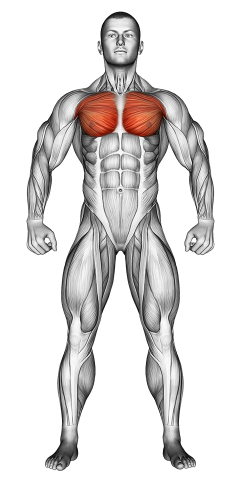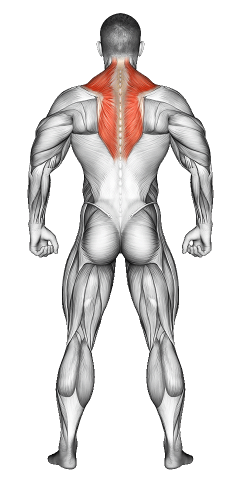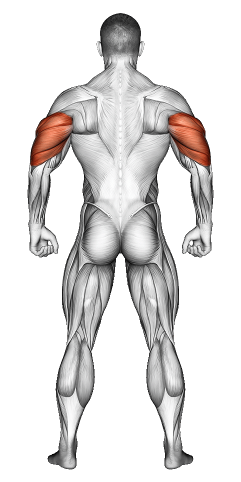Plyometric Push-Up: Video Tutorial & Exercise Guide

Written By: Claude Michael
Updated: Oct 13, 2024
| Workout | Plyometric Push-Up |
| Primary Muscle Group | Chest |
| Secondary Muscle Group | Shoulders, Triceps Abs |
| Equipment Required | Bodyweight |
| Force Type | Push |
| Mechanics | Compound |
| Exercise Type | Strength |
| Difficulty | Advanced |
Plyometric Push-Up: Video Tutorial & Exercise Guide
- 1.Plyometric Push-Up: Muscle Groups
- -1.1Primary Muscle Group
- -1.2Secondary Muscle Group
- 2.Plyometric Push-Up: Step-by-Step Guide
- 3.Plyometric Push-Up: Overview
- 4.Plyometric Push-Up: Benefits
- 5.Plyometric Push-Up: Pro Tips & Advanced Techniques
- 6.Plyometric Push-Up: Progression Plan
- 7.Plyometric Push-Up: Frequently Asked Questions (FAQs)
Plyometric Push-Ups: Step-by-Step Guide
- Step 1: Begin in a standard push-up position with your hands placed slightly wider than shoulder-width apart, body in a straight line from head to heels, and core engaged.
- Step 2: Lower your chest toward the floor by bending your elbows, keeping your body straight and controlled. Your elbows should flare out at about a 45-degree angle.
- Step 3: Once your chest is near the floor, explosively push through your hands, launching your body upward off the ground. Your hands should leave the floor momentarily.
- Step 4: Land softly back in the starting push-up position, with your elbows slightly bent to absorb the impact.
- Step 5: Repeat for the desired number of reps, focusing on maintaining control and explosiveness throughout each rep.
Plyometric Push-Up: Overview
Plyometric Push-Ups are an advanced push-up variation that focuses on building explosive power in the upper body. This exercise primarily targets the chest, shoulders, and triceps, while also engaging the core for stability. The explosive nature of the movement adds a dynamic element to your workout, improving both strength and speed.
This high-intensity exercise is ideal for athletes or anyone looking to boost their upper body power and endurance. The plyometric push-up is also a great way to incorporate functional strength and cardiovascular conditioning into your workout routine.
Plyometric Push-Ups: Benefits
Plyometric Push-Ups target the chest, shoulders, and triceps, helping to build explosive strength and power. The rapid push-off from the ground enhances fast-twitch muscle fiber activation, which is crucial for developing upper body speed and power.
This exercise also improves muscular endurance, as the explosive nature of the movement requires strength and stamina to perform multiple reps. Additionally, Plyometric Push-Ups help improve core stability and coordination, as your body must maintain balance during the explosive push-off and landing.
Plyometric Push-Ups are great for enhancing athletic performance, especially in sports that require pushing movements like basketball, football, or martial arts.
Plyometric Push-Ups: Pro Tips & Advanced Techniques
Keep your core tight and avoid letting your hips sag as you lower your body. Focus on exploding upward with maximum force to leave the ground, but control the descent to prevent injury. For an added challenge, try clapping your hands in midair or performing the exercise with your feet elevated. Ready to build explosive power? Let’s push it up!
Plyometric Push-Ups: Progression Plan
Beginner
Intermediate
Advanced
Plyometric Push-Ups: Frequently Asked Questions (FAQs)
What muscles do Plyometric Push-Ups target?
+Plyometric Push-Ups primarily target the chest, shoulders, and triceps, while also engaging the core for stability and control during the explosive movement.
Are Plyometric Push-Ups suitable for beginners?
+Plyometric Push-Ups are an advanced exercise and may be challenging for beginners. It's recommended to master standard push-ups first before progressing to the plyometric version.
How can I make Plyometric Push-Ups more challenging?
+To increase difficulty, try clapping your hands at the top of the push-up or elevating your feet on a bench. You can also slow down the lowering phase to add more time under tension.
How often should I include Plyometric Push-Ups in my routine?
+Include this exercise 2-3 times per week as part of your upper body or high-intensity training routine. It pairs well with other push-up variations and plyometric exercises for a power-building workout.
What common mistakes should I avoid?
+Avoid arching your lower back or using improper form during the push-off. Keep your core engaged, focus on controlled landings, and ensure your body remains in a straight line during the movement.
Share
Don’t Wish for It, Work for It – Join the FlexXP Newsletter Today!
Thank you for signing up for the FlexXP Newsletter!
This site is protected and the Google Privacy Policy and Terms of Service apply.



